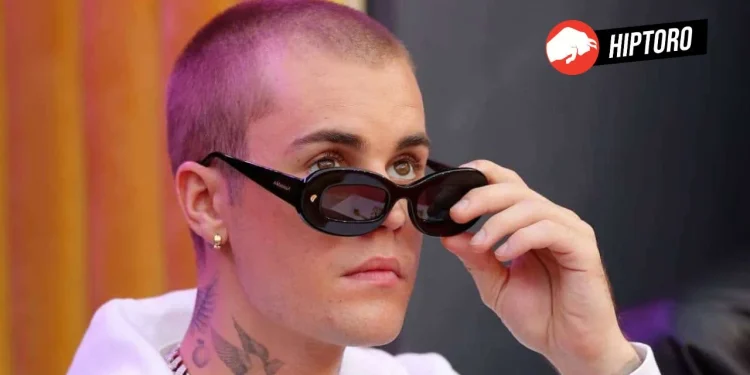To begin this comprehensive exploration of Justin Bieber’s musical journey, we first delve into the evolution of this pop sensation, highlighting the milestones and stylistic shifts that have marked his career. Starting as a YouTube sensation, Bieber quickly ascended the ranks of pop music stardom with his debut EP, “My World,” in 2009. His blend of teen pop with R&B elements captured the hearts of millions worldwide, setting the stage for a decade of chart-topping hits, sold-out tours, and a significant impact on pop culture.
Bieber’s ability to evolve artistically while maintaining commercial success is noteworthy. Albums like “Believe” and “Purpose” showcased his growth from a teen idol to a mature artist, addressing themes of love, regret, and faith. His collaborations with artists across genres have also highlighted his versatility and ability to stay relevant in the ever-changing music industry. This journey from a young talent to a global pop phenomenon provides a rich tapestry from which we draw the top 10 best songs of his career.
List of Top 10 Best Songs of Justin Bieber
Given Justin Bieber’s extensive discography, identifying the top 10 best songs involves considering chart performance, critical acclaim, fan reception, and their impact on his career. While personal opinions may vary, the following list represents a cross-section of his most celebrated works, capturing various stages of his musical evolution:
1. Sorry – A standout track from the “Purpose” album that showcases Bieber’s foray into EDM, marked by heartfelt apologies and a catchy beat.
2. Love Yourself – A minimalist, acoustic track co-written by Ed Sheeran, focusing on self-respect and moving on from a toxic relationship.
3. What Do You Mean? – The lead single from “Purpose,” combines a light-hearted pop sound with an infectious beat, questioning the signals in a relationship.
4. Where Are Ü Now – A collaboration with Diplo and Skrillex that signaled Bieber’s shift towards more electronic sounds, earning critical and commercial success.
5. Baby – The song that skyrocketed Bieber to fame, a quintessential teen pop anthem featuring Ludacris.
6. As Long as You Love Me – Featuring Big Sean, this song mixes R&B beats with electronic influences, emphasizing love’s endurance over material wealth.
7. Beauty and a Beat – A high-energy track featuring Nicki Minaj, showcasing Bieber’s ability to blend pop and electronic dance music.
8. Boyfriend – A departure from his early teen pop sound, this track introduced a more mature, R&B-influenced Bieber.
9. I Don’t Care – A duet with Ed Sheeran, this pop track discusses being at ease in one’s skin and finding comfort in companionship.
10. Intentions – Featuring Quavo, this song highlights Bieber’s commitment to positive messages and social causes, wrapped in an R&B-pop package.
This list encapsulates Justin Bieber’s journey through the music industry, showcasing his versatility and ability to adapt to new trends while still maintaining his signature style.
1. Sorry – An Apology Set to an Unforgettable Beat
Released in 2015 as part of Justin Bieber’s fourth studio album, “Purpose,” “Sorry” stands out as a monumental track that not only marked a pivotal moment in Bieber’s career but also in the landscape of pop music. This song, infused with tropical house elements, represents Bieber’s public apology for past mistakes, showcasing his vulnerability and desire for redemption in the eyes of fans and critics alike. Produced by Skrillex and BloodPop®, “Sorry” is a masterful blend of catchy rhythms, heartfelt lyrics, and a danceable beat that resonated with a wide audience, becoming an anthem of forgiveness and reflection.
The track’s success was immediate and widespread, reaching the top of the charts in over 13 countries and becoming one of the best-selling singles globally. Its appeal lay not just in its melodic hook but in its ability to convey a sincere apology through pop music, a rarity in a genre often focused on love and heartbreak. Bieber’s vocal delivery in “Sorry” is both emotive and polished, demonstrating his growth as an artist and his ability to connect with listeners on a personal level.
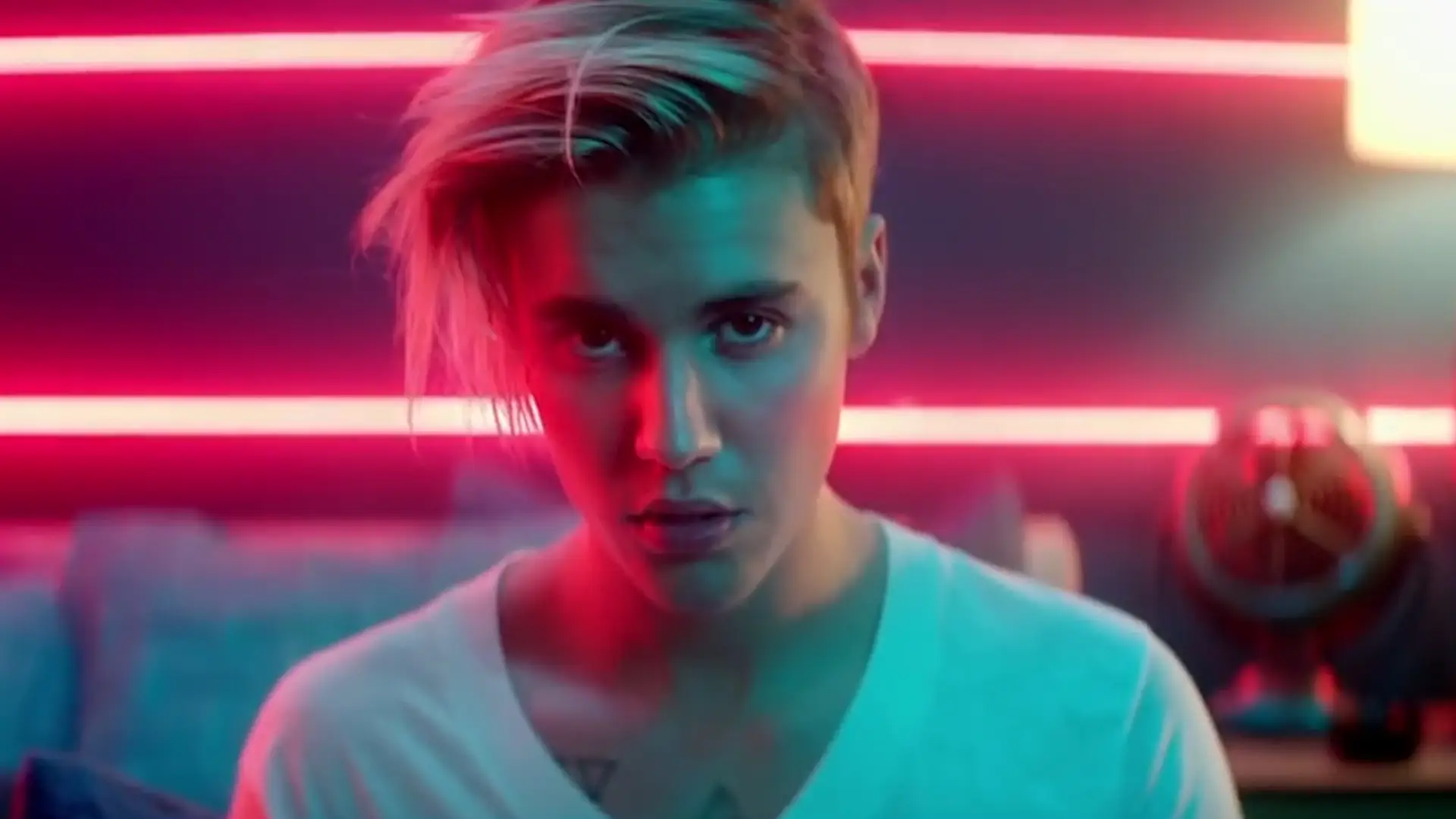
The music video for Sorry, a vibrant dance video featuring a group of women performing an energetic and colorful routine, further amplified the song’s impact. Unlike traditional music videos that often feature the artist prominently, Bieber’s absence was a creative decision that shifted the focus to the song’s message and the universal language of dance. This choice paid off, as the video amassed billions of views on YouTube, becoming one of the platform’s most-watched videos.
Lyrically, “Sorry” delves into themes of regret and reconciliation, with Bieber asking for forgiveness from someone he’s wronged. The chorus, catchy and repetitive, makes the plea for forgiveness impossible to ignore, while the verses reflect a more introspective Bieber, acknowledging his mistakes and the pain caused. This blend of upbeat music and apologetic lyrics created a unique contrast that captured the public’s imagination, making “Sorry” a song that transcends the boundaries of pop music.
Critically, “Sorry” was hailed as a standout track from “Purpose,” with many praising Bieber’s vocal performance and the production’s quality. The song signified a turning point in Bieber’s career, where he moved away from the teen pop sensation image and embraced a more mature, introspective persona. It also highlighted his willingness to experiment with different sounds and genres, a trait that would define his subsequent music releases.
Commercially, “Sorry” achieved remarkable success. It not only dominated the charts but also became a streaming sensation, reflecting the changing ways people consume music. The song’s longevity on the charts underscored its universal appeal and Bieber’s ability to craft hits that resonate with a broad audience.

In conclusion, “Sorry” is more than just a pop song; it’s a cultural phenomenon that encapsulates a moment in time for Justin Bieber and the music industry. Its blend of infectious beats, relatable lyrics, and a heartfelt apology captured the essence of Bieber’s “Purpose” era, marking a significant chapter in his journey as an artist. The song’s success is a testament to Bieber’s talent and his ability to evolve, ensuring his place among pop music’s elite.
2. Love Yourself – A Masterpiece of Minimalism and Lyricism
Justin Bieber’s “Love Yourself” is a stark departure from the synth-heavy, dance-oriented tracks that populated much of his earlier work. Released in 2015 as part of his critically acclaimed album “Purpose,” this song showcases a more introspective and mature side of Bieber. Co-written by Ed Sheeran and Benny Blanco, “Love Yourself” strips down to the essentials—guitar strings, a subtle trumpet in the background, and Bieber’s raw vocals—creating an intimate atmosphere that allows the song’s poignant lyrics to shine.
The song’s narrative is a powerful ode to self-respect and moving on from a relationship where one’s efforts and love are unappreciated. Its chorus, “Cause if you like the way you look that much / Oh baby, you should go and love yourself,” serves as both a scathing critique and a liberating message, resonating with listeners worldwide. The simplicity of the arrangement—featuring just a guitar and minimal percussion—paired with Bieber’s heartfelt delivery, makes “Love Yourself” a standout track not only within the album but in his entire discography.
“Love Yourself” received widespread critical acclaim upon its release, with music critics praising its lyrical depth, Bieber’s vocal performance, and the song’s minimalist production. It marked a significant moment in Bieber’s career, showcasing his growth as an artist capable of conveying complex emotions through music. The song’s commercial success was equally impressive, topping charts around the globe and becoming one of the best-selling singles of 2016. Its universal appeal lay in its relatability, capturing the complexities of love and self-worth in a way that felt both personal and universal.
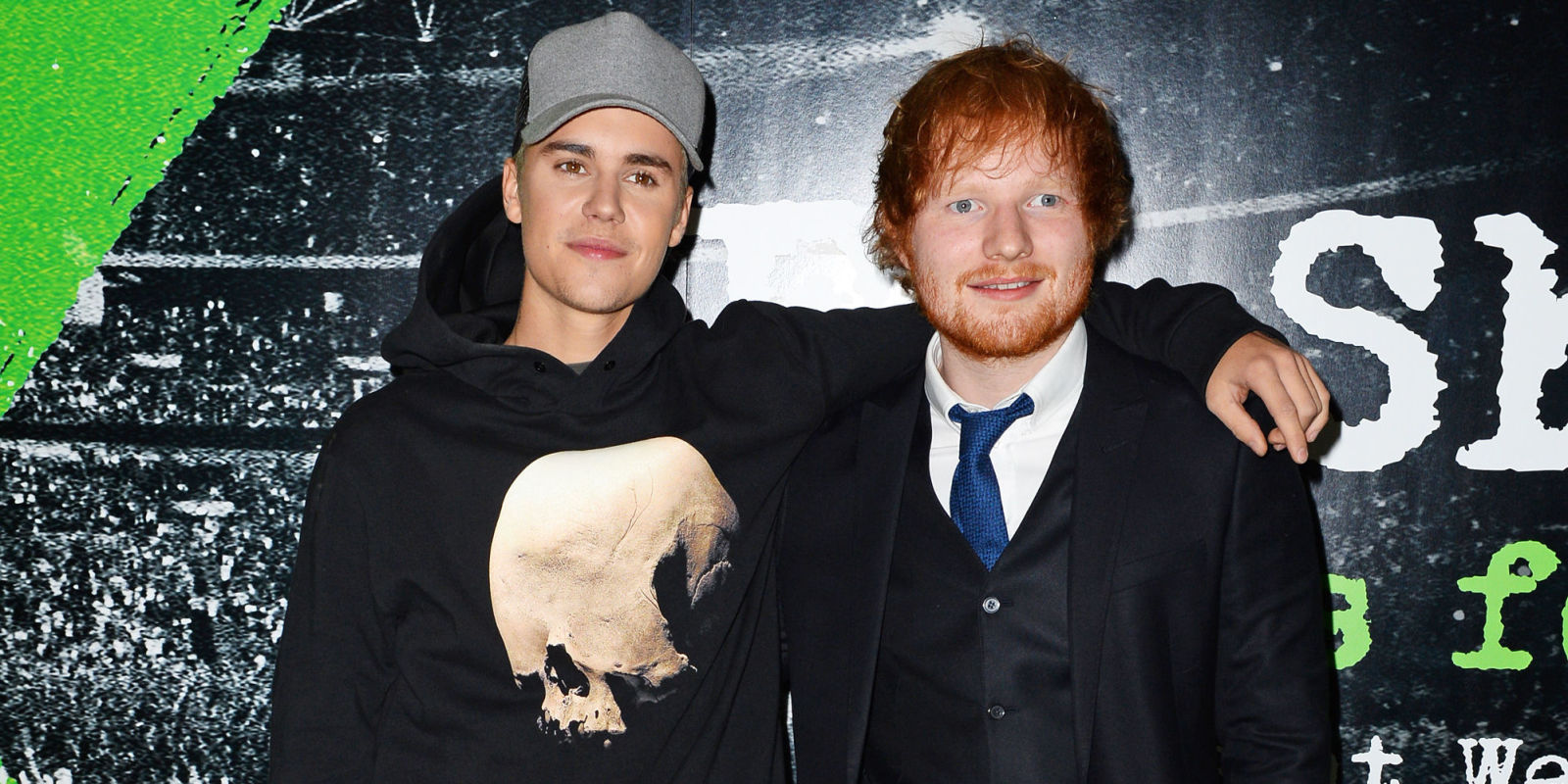
The music video for “Love Yourself,” part of the “Purpose: The Movement” project, further emphasized the song’s intimate nature. It featured a couple’s relationship unfolding in reverse, highlighting the song’s themes of reflection and letting go. This creative approach to storytelling complemented the song’s message, adding a visual layer to its emotional depth.
“Love Yourself” also signified Bieber’s evolution from a pop icon to a more nuanced and versatile artist. Collaborating with Ed Sheeran brought a new dimension to his music, blending Sheeran’s singer-songwriter sensibility with Bieber’s pop sensibilities. This partnership proved to be a perfect match, resulting in a song that feels both timeless and contemporary.
Beyond its success on the charts, “Love Yourself” has had a lasting impact on Bieber’s career and pop music. It demonstrated the power of simplicity in music production and the importance of authentic storytelling. The song has been covered by numerous artists across different genres, further attesting to its wide-reaching influence and appeal.

In essence, “Love Yourself” is not just a song; it’s an anthem for self-respect and personal strength. Its success showcases Justin Bieber’s artistic maturity and ability to connect with audiences on a deeper level. Through its minimalist production and heartfelt lyrics, “Love Yourself” stands as a testament to Bieber’s evolution as an artist and the transformative power of music.
3. What Do You Mean? – A Synth-Driven Inquiry into Communication and Relationships
Released in 2015 as the lead single from Justin Bieber’s fourth studio album, “Purpose,” “What Do You Mean?” marked a significant turning point in Bieber’s musical career. This song not only signified his return to the music scene after a brief hiatus but also showcased a mature, reflective side of the artist who was eager to experiment with new sounds and themes. With its blend of a light-hearted pop melody, a tropical house vibe, and lyrical content that delves into the complexities of communication in relationships, “What Do You Mean?” resonated with a wide audience, achieving critical and commercial success.
Produced by Bieber himself, along with MdL and Skrillex, the song features a distinctive clock-ticking sound that underscores its theme of urgency and confusion in understanding a partner’s signals. This choice of production, coupled with Bieber’s emotive vocals, creates a sense of immediacy and relatability, making it a standout track in Bieber’s discography. The song’s chorus, with its rhetorical question, “What do you mean? When you nod your head yes, but you wanna say no, what do you mean?” captures the universal frustration of mixed signals in relationships, making it an anthem for the digitally connected, yet emotionally perplexing, modern dating landscape.
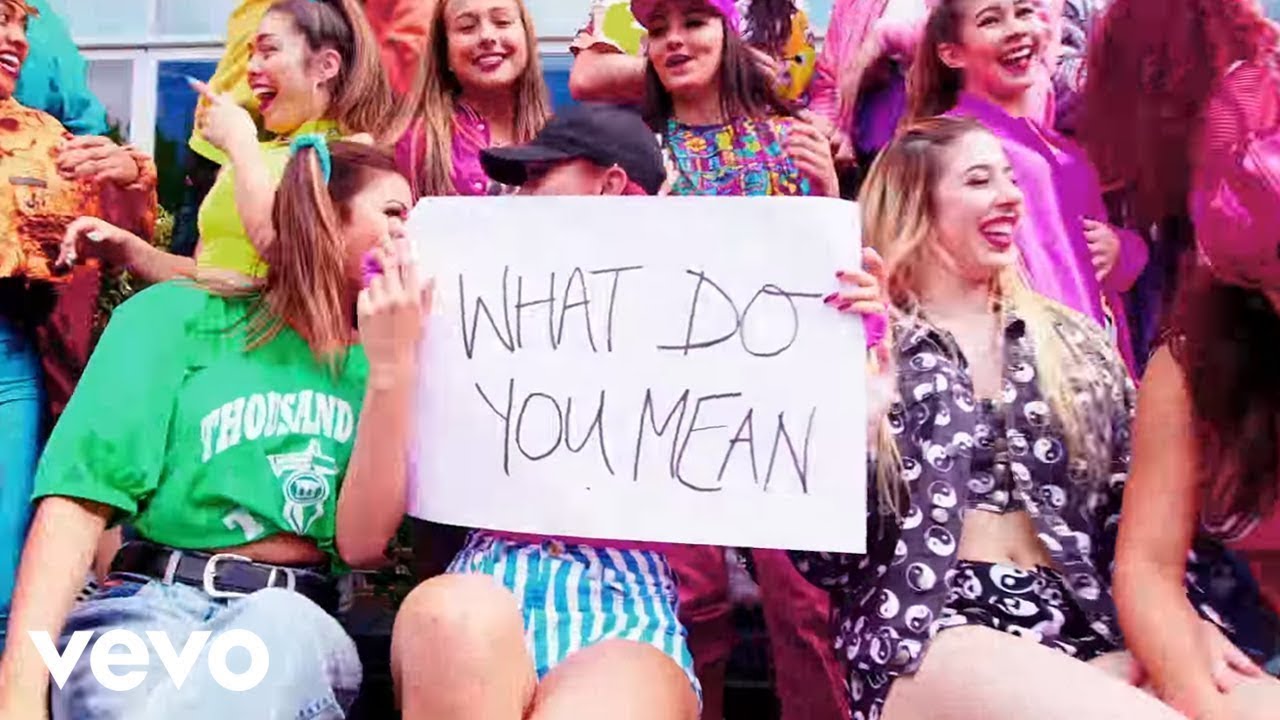
Upon its release, “What Do You Mean?” was met with widespread acclaim, both for its production quality and for Bieber’s vocal performance. Critics highlighted the song as a mature departure from his earlier teen pop sound, noting its ability to bridge the gap between pop and electronic music. The song’s commercial performance was equally impressive, debuting at number one on the Billboard Hot 100 chart. This achievement made Bieber the youngest male artist to debut at the top of the chart, cementing his status as a major force in the music industry.
The music video for “What Do You Mean?” further contributed to the song’s narrative, depicting a story of adventure, romance, and ambiguity that aligns with the song’s themes. The visual element added a layer of storytelling that complemented the song’s lyrical content, enhancing its appeal and broadening its reach.
“What Do You Mean?” also played a crucial role in Bieber’s “Purpose” album narrative, setting the tone for an album that explores themes of redemption, reflection, and personal growth. The song’s success helped to re-establish Bieber’s relevance in the music industry, showcasing his ability to evolve as an artist and to tackle more mature and complex subjects in his music.
In the broader context of pop music, “What Do You Mean?” stands out for its ability to blend catchy pop sensibilities with the emerging sounds of electronic dance music, particularly tropical house. This fusion of genres signaled a shift in mainstream pop music, with Bieber at the forefront of this transition. The song’s impact extends beyond its chart performance, influencing the sound of pop music and paving the way for future collaborations between pop artists and electronic music producers.

In conclusion, “What Do You Mean?” is more than just a pop song; it’s a cultural touchstone that encapsulates a moment in music history. Its success is a testament to Justin Bieber’s artistry, his willingness to experiment with new sounds, and his ability to capture the complexities of human emotions in his music. Through its exploration of communication in relationships, “What Do You Mean?” resonates with listeners, making it a timeless addition to Bieber’s catalog and a milestone in his career.
4. Where Are Ü Now
A collaborative effort between Justin Bieber, Diplo, and Skrillex (under their Jack Ü collaboration), marked a pivotal moment in Bieber’s career, serving as a bridge between his pop roots and a burgeoning interest in electronic music. This track not only showcased Bieber’s versatility as an artist but also played a crucial role in reshaping his public image and musical identity.
The song, characterized by its innovative blend of electronic dance music (EDM) with pop sensibilities, features a distinctive sound marked by Skrillex’s signature production style — a mix of sparse beats, subtle electronic flourishes, and a haunting vocal sample that transforms Bieber’s voice into a compelling instrument of its own. The track’s lyrical content, reflecting themes of longing and introspection, complements its sonic landscape, offering depth and emotion that resonate with a wide audience.
Upon its release, “Where Are Ü Now” received widespread acclaim for its artistic innovation and was praised for pushing the boundaries of mainstream pop and EDM. Critics lauded the song for its emotional depth, production quality, and Bieber’s vocal performance, highlighting it as a standout track that defied genre conventions. The collaboration with Diplo and Skrillex, both giants in the electronic music scene, was seen as a bold move for Bieber, demonstrating his willingness to experiment and evolve as an artist.
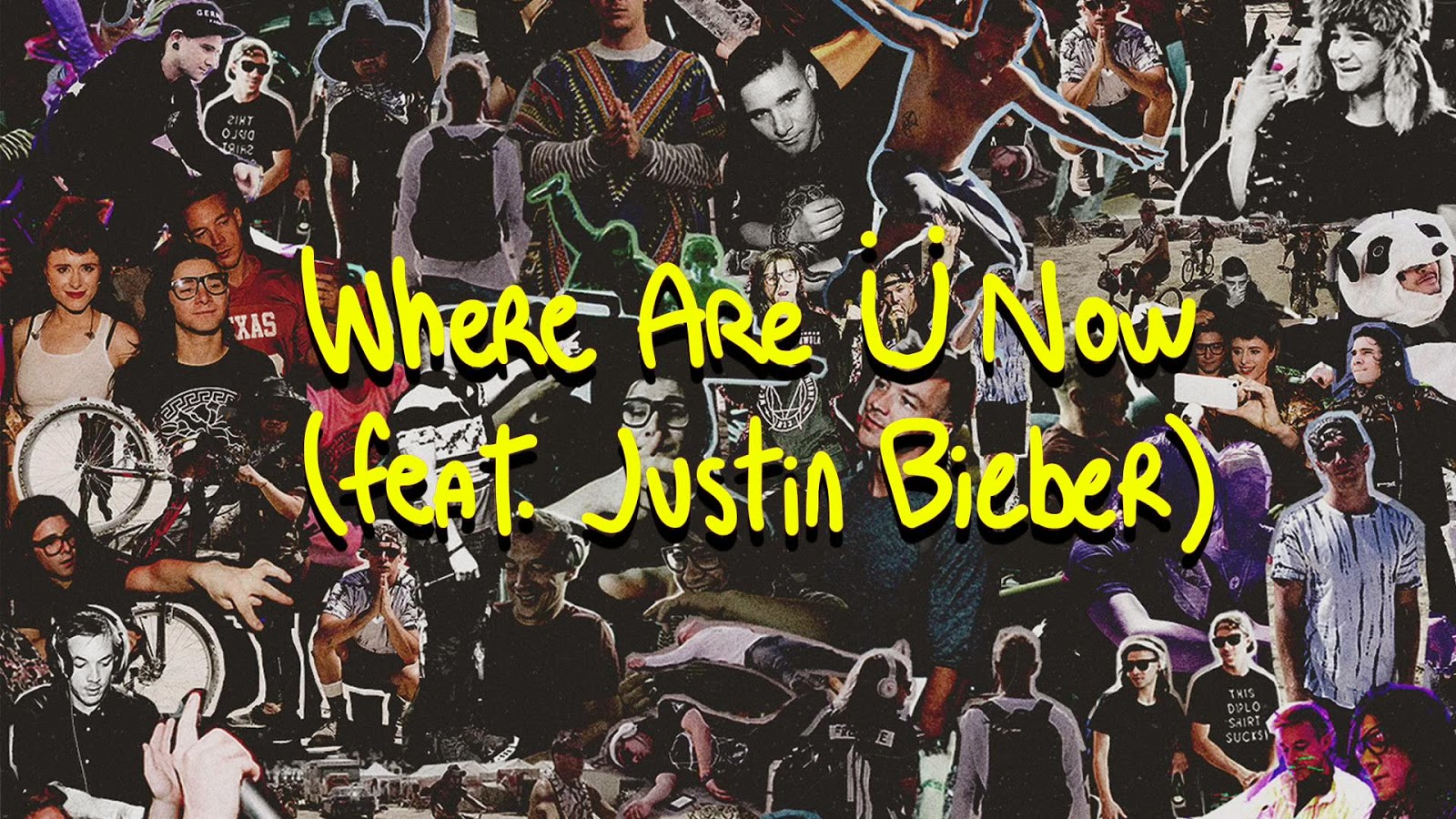
Commercially, the song achieved significant success, charting internationally and becoming a staple on radio and streaming platforms. Its success helped to cement Bieber’s comeback in the music industry, signaling a new chapter in his career that embraced more mature themes and complex soundscapes. “Where Are Ü Now” also played a key role in the mainstream acceptance of EDM, bridging the gap between pop and electronic music and introducing Bieber’s fanbase to new musical styles.
The music video for “Where Are Ü Now” further underscored the song’s artistic message, featuring a series of images and drawings animated over frames of Bieber, creating a visually striking and emotive experience. This innovative approach to the music video format added a layer of artistry to the track, reinforcing its status as a groundbreaking work.
In the broader context of Bieber’s discography and the landscape of contemporary music, “Where Are Ü Now” stands as a testament to the power of collaboration and the importance of artistic evolution. The song not only revitalized Bieber’s career but also challenged perceptions of pop and electronic music, showcasing the potential for cross-genre collaborations to create new and exciting musical experiences.

In conclusion, “Where Are Ü Now” is more than just a song; it’s a milestone in Justin Bieber’s career and a defining moment in the convergence of pop and EDM. Through its innovative production, emotive lyrics, and successful collaboration, the track highlights Bieber’s artistic growth and his ability to adapt to the changing dynamics of the music industry. As a piece of the larger tapestry of his top 10 best songs, “Where Are Ü Now” encapsulates the essence of Bieber’s journey—a continuous exploration of sound, identity, and the power of music to connect and inspire.
5. Baby – The Anthem that Defined a Generation
“Baby,” released in 2010, is not just a song—it’s a cultural phenomenon that catapulted Justin Bieber into the stratosphere of global pop superstardom. As the lead single from his debut studio album, “My World 2.0,” “Baby” features a catchy melody, upbeat tempo, and a memorable verse from rapper Ludacris, all of which combined to create an irresistible pop hit. The song’s youthful energy, universal theme of first love, and Bieber’s charismatic delivery resonated with millions of fans worldwide, making it an iconic track in the annals of pop music.
From the opening notes of the song’s infectious beat to its chorus that begs to be sung along to, “Baby” captures the innocence and excitement of teenage romance. The lyrics, simple yet effective, speak to the universal experience of young love and the heartache of a first breakup. Bieber’s vocal performance, combined with Ludacris’s rap verse, bridges the gap between pop and hip-hop, showcasing Bieber’s versatility as an artist and his ability to connect with a broad audience.
Upon its release, “Baby” quickly became a chart-topping hit, reaching the top ten in multiple countries and becoming one of the most commercially successful singles of Bieber’s career. Its music video, which features Bieber dancing and flirting in a bowling alley, became a sensation on YouTube, amassing billions of views and becoming one of the most-watched videos of all time. The video’s popularity helped solidify Bieber’s status as a teen idol and a force to be reckoned with in the music industry.
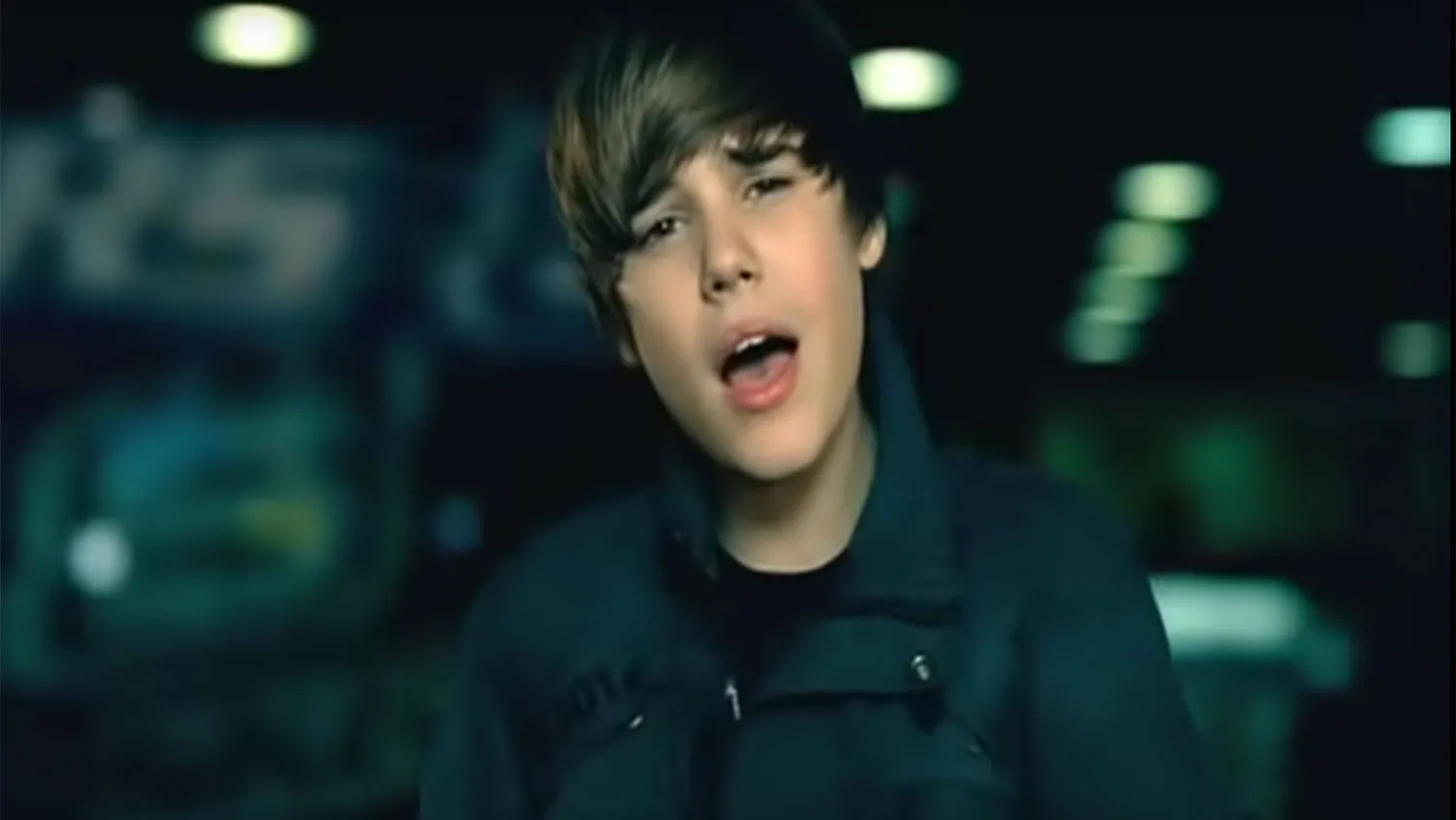
Critically, “Baby” received mixed reviews, with some praising its catchy beat and pop sensibility, while others critiqued it for its lyrical simplicity. However, its impact on popular culture cannot be overstated. “Baby” became an anthem for a generation, symbolizing the emergence of a new era in pop music characterized by the rise of social media and the power of the internet to launch careers and shape musical tastes.
“Baby” also played a significant role in shaping Bieber’s career trajectory. The song’s success laid the foundation for his status as one of the most influential pop artists of his generation, opening doors to numerous collaborations, sold-out tours, and subsequent hits. It showcased Bieber’s potential not just as a teen sensation but as a versatile artist capable of evolving and adapting to the changing landscape of the music industry.
In the years since its release, “Baby” has remained a staple of pop culture, often cited as one of the defining songs of the early 2010s. Its catchy chorus and memorable beat continue to be celebrated in nostalgic retrospectives of the decade’s music. The song’s longevity is a testament to its appeal and the indelible mark it has left on the music world.

In conclusion, “Baby” is more than just a hit song; it’s a milestone in pop music history. Its success marked the beginning of Justin Bieber’s ascent to global fame, establishing him as a pop icon and a voice for a new generation of music fans. Through its blend of catchy pop hooks and youthful energy, “Baby” captured the essence of teenage romance, leaving a lasting impact on Bieber’s career and the landscape of pop music.
6. As Long as You Love Me – A Fusion of Love and Electronic Beats
Justin Bieber’s “As Long as You Love Me,” featuring rapper Big Sean, stands out as a pivotal track in his discography, showcasing a daring blend of R&B, pop, and dubstep elements. Released in 2012 as a single from his third studio album, “Believe,” this song marks a significant departure from the pure pop sound that characterized Bieber’s earlier hits. It illustrates his venture into more mature musical territories, exploring complex themes of unconditional love and resilience in the face of adversity.
The track’s production, led by Rodney “Darkchild” Jerkins, is a sophisticated mix of electronic beats, synths, and a bass-heavy dubstep break, offering a fresh sound that was somewhat new to mainstream pop music at the time. Bieber’s vocals are more refined and emotive, demonstrating his growth as an artist and his ability to convey deep emotions. The addition of Big Sean’s verse adds a layer of complexity to the song, blending seamlessly with the track’s theme and Bieber’s melodies.

Lyrically, “As Long as You Love Me” delves into the theme of enduring love, with Bieber professing his readiness to face any obstacle as long as his partner’s love remains. This message of devotion, paired with the song’s dynamic production, struck a chord with audiences worldwide, earning it a spot in the top ten charts across several countries. The song’s chorus, catchy and anthemic, resonates with listeners, encapsulating the track’s essence of commitment and love’s power to overcome challenges.
The music video for “As Long as You Love Me” further enriches the song’s narrative, portraying a dramatic storyline of forbidden love that echoes the intensity and passion of the lyrics. Featuring a cinematic quality and a compelling performance from Bieber, the video enhances the song’s message, making it an integral part of its success and impact.
Critically, “As Long as You Love Me” was received with acclaim, with reviewers highlighting Bieber’s vocal maturity and the track’s innovative sound. It was seen as evidence of Bieber’s evolution from a teen pop idol to a more versatile and serious artist, capable of tackling a broader range of musical styles and themes. The song’s success helped to solidify Bieber’s position in the music industry, proving his ability to adapt and grow with his audience.
Commercially, “As Long as You Love Me” achieved significant success, becoming a radio hit and a streaming favorite. Its appeal was broad, reaching fans of pop, R&B, and electronic music alike, and contributing to the overall success of the “Believe” album. The song’s enduring popularity is a testament to its quality and the effective fusion of genres it represents.
In the broader context of Justin Bieber’s career, “As Long as You Love Me” is a milestone that reflects his artistic growth and willingness to experiment with new sounds. It played a crucial role in the transition of his image and music style, paving the way for future projects that would continue to explore different musical landscapes. The track remains a fan favorite, celebrated for its emotional depth, memorable melodies, and innovative production.

In conclusion, “As Long as You Love Me” is more than just a hit single; it’s a bold statement of artistic evolution and a testament to love’s enduring strength. Its successful blend of pop sensibilities with electronic influences marked a significant moment in Bieber’s career, showcasing his ability to push musical boundaries and connect with audiences on a deeper level. Through this song, Justin Bieber demonstrated not only his musical versatility but also his commitment to evolving as an artist, ensuring his place in the landscape of contemporary music.
7. Beauty and a Beat – A Celebration of Youth and Beat
Justin Bieber’s “Beauty and a Beat,” featuring Nicki Minaj, encapsulates a moment in time for pop music, where high-energy beats meet youthful exuberance. Released in 2012 as part of his third studio album, “Believe,” this track stands out for its fusion of pop and electronic dance music (EDM), showcasing Bieber’s versatility and his ability to create a club-ready hit that resonates with a wide audience.
The song’s production, handled by Max Martin and Zedd, is a vibrant mix of pulsating synths, heavy basslines, and an infectious chorus that invites listeners to lose themselves in the music. “Beauty and a Beat” is a testament to the power of collaboration, with Nicki Minaj adding a dynamic verse that complements Bieber’s vocals and elevates the song to a new level. The track’s lyrical content, celebrating love and the carefree moments of youth, coupled with its energetic beat, captures the essence of what it means to be young and in love.
Upon its release, “Beauty and a Beat” was met with positive reviews from music critics, who praised its catchy hook and dancefloor appeal. The song’s commercial success was immediate, charting in the top ten in several countries and becoming a staple in clubs and radio worldwide. Its appeal was further bolstered by a music video that featured a pool party scenario, aligning perfectly with the song’s theme of youthful celebration. The video, which Bieber claimed was “leaked” as a marketing strategy, went viral, adding to the song’s popularity and showcasing Bieber’s creative approach to promotion.
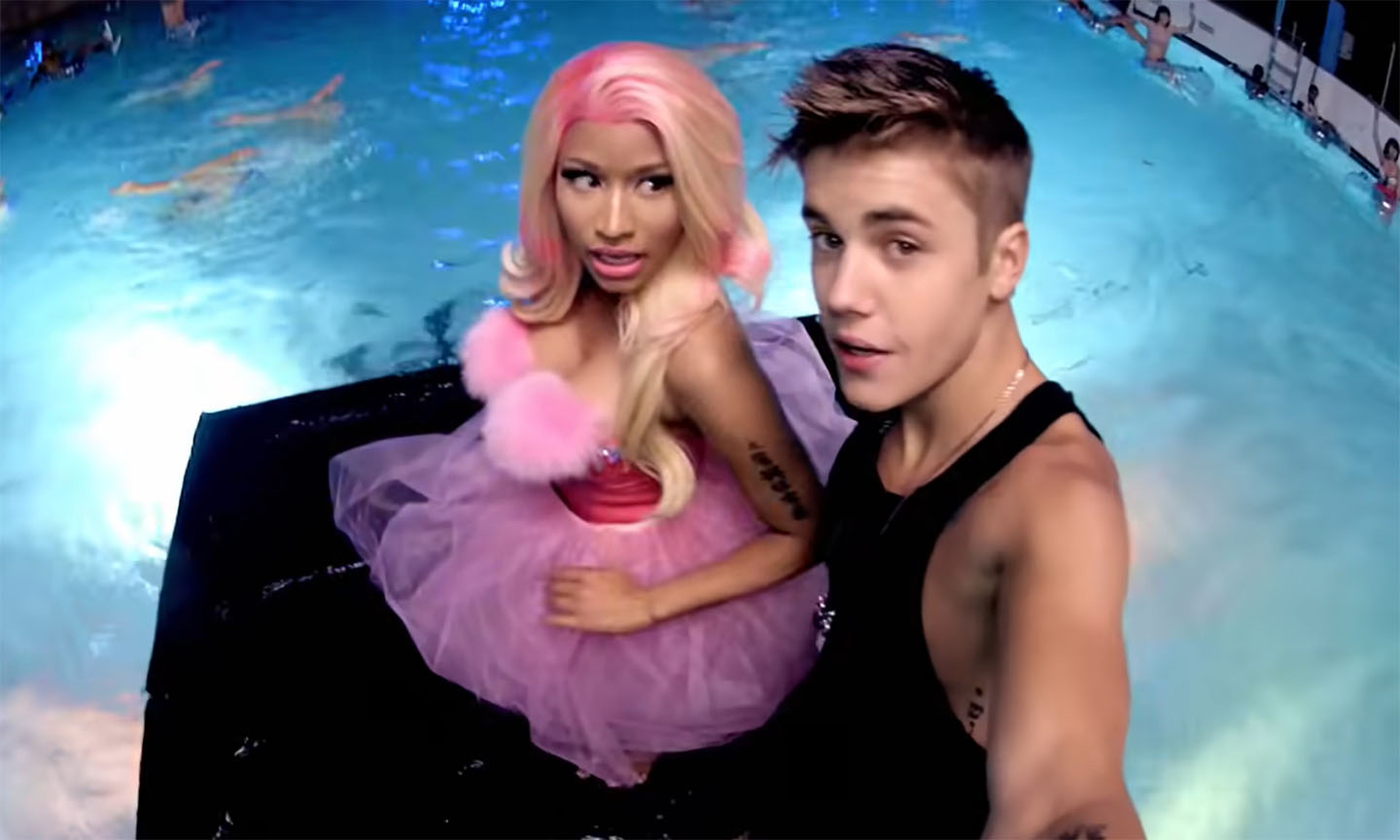
“Beauty and a Beat” also marked a significant moment in Bieber’s career, illustrating his transition from a teen idol to a more mature artist capable of experimenting with different musical styles. The collaboration with Nicki Minaj, a prominent figure in the hip-hop and pop music scenes, was a strategic move that highlighted Bieber’s ability to bridge genres and appeal to a broader audience. This track solidified his status as a versatile artist, not confined to the boundaries of teen pop music.
Critically, the song is often cited as a highlight of the “Believe” album, with many pointing to its production and catchy melody as key factors in its success. Its combination of pop sensibilities with EDM elements was seen as a bold move that paid off, showcasing Bieber’s growth as an artist and his willingness to take risks.
Commercially, “Beauty and a Beat” achieved significant success, contributing to the overall impact of the “Believe” album and reinforcing Bieber’s presence in the music industry. The song’s enduring popularity can be attributed to its universal appeal, catchy beat, and memorable collaboration with Minaj, making it one of Bieber’s standout tracks.
In the broader context of pop music, “Beauty and a Beat” represents a moment when the genre was increasingly embracing electronic and dance music influences. Bieber’s foray into this territory with such a successful track helped pave the way for other artists to explore similar collaborations and sounds, influencing the direction of pop music in the years to follow.

In conclusion, “Beauty and a Beat” is more than just a pop song; it’s a celebration of youth, love, and the joy of music. Its success is a testament to Justin Bieber’s ability to evolve as an artist, exploring new sounds and pushing the boundaries of pop music. The collaboration with Nicki Minaj not only enriched the track but also showcased the potential of cross-genre partnerships in creating hit songs. As a significant entry in Bieber’s discography, “Beauty and a Beat” continues to be celebrated for its infectious energy and its role in defining a period of pop music history.
8. Boyfriend – A Sonic Shift Towards Maturity
Justin Bieber’s “Boyfriend” represents a watershed moment in his career, marking a deliberate shift from the bubblegum pop that defined his early years to a more mature, R&B-infused sound. Released in 2012 as the lead single from his third studio album, “Believe,” “Boyfriend” showcases Bieber’s evolution both as an artist and as a vocal performer. With its smooth production, sultry lyrics, and rap-inflected delivery, the song stands out as a bold declaration of artistic growth and a departure from the teen idol image that catapulted him to fame.
Produced by Mike Posner and Mason Levy, “Boyfriend” blends elements of pop, R&B, and hip-hop, creating a sound that is both contemporary and ahead of its time. The track’s minimalist beat, punctuated by sharp snaps and a subtle bassline, provides a sleek backdrop for Bieber’s vocals, which oscillate between singing and spoken word. This stylistic choice not only showcased his versatility but also appealed to a wider audience, extending his reach beyond the teenage fanbase that had initially propelled him to stardom.
Lyrically, “Boyfriend” explores themes of romance and commitment, with Bieber adopting a more confident, seductive tone. The lyrics, “If I was your boyfriend, I’d never let you go / I can take you places you ain’t never been before,” reflect a departure from the innocence of his earlier work, signaling a new phase in his musical journey. The song’s bridge, which sees Bieber rap for the first time in a single, further underscores this shift, blending genres in a way that is both innovative and reflective of broader trends in pop music.
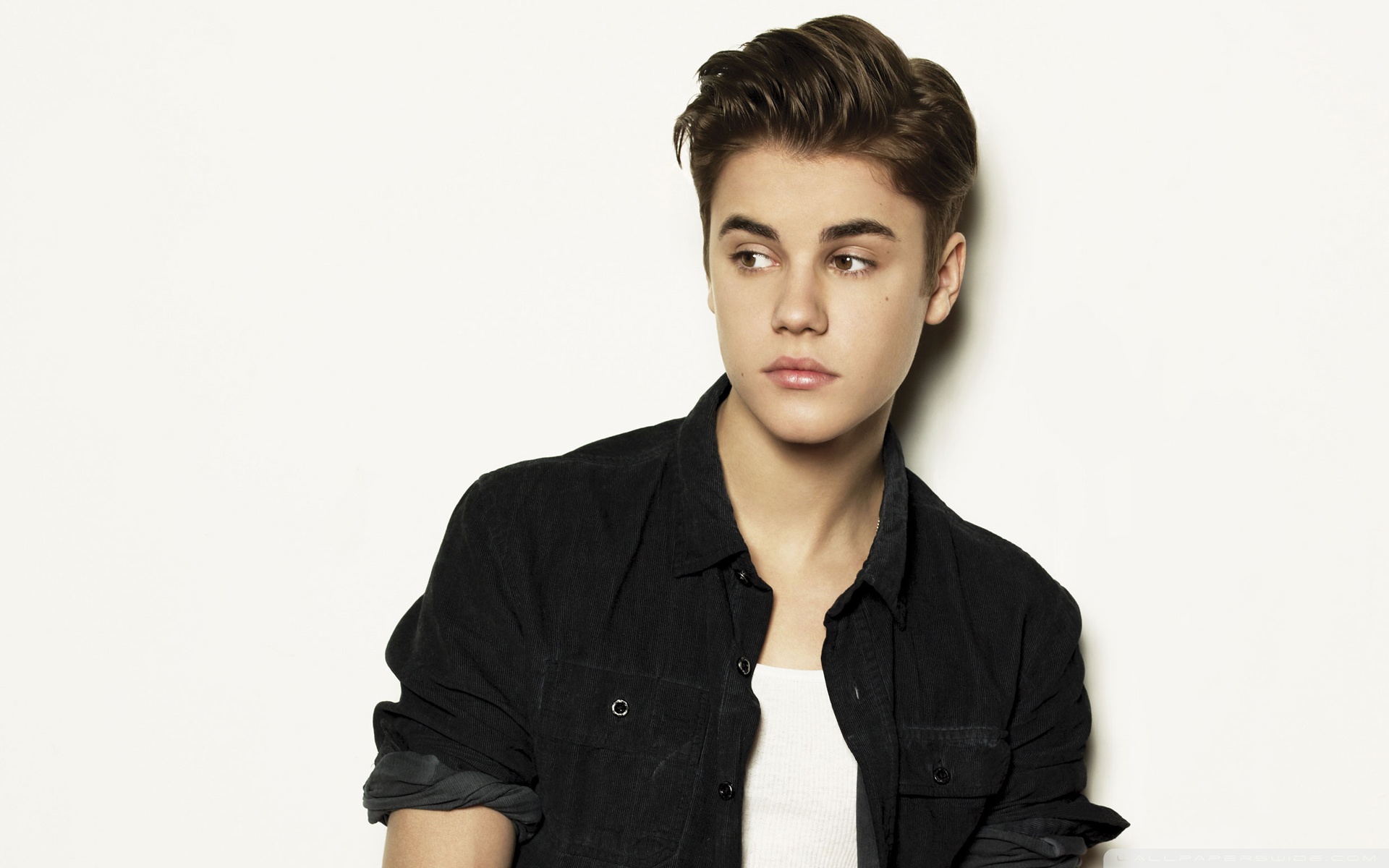
Upon its release, “Boyfriend” received mixed to positive reviews from critics, many of whom praised Bieber’s vocal performance and the song’s production quality. While some noted the stark departure from his previous work, the consensus was that “Boyfriend” represented a mature, compelling step forward for the artist. Commercially, the song was a resounding success, debuting at number two on the Billboard Hot 100 and earning multi-platinum certifications in several countries. Its performance solidified Bieber’s status as a mainstay in the music industry and demonstrated his ability to navigate the transition from a teen sensation to a more diversified artist.
The music video for “Boyfriend” further amplifies the song’s themes of sophistication and allure. Featuring sleek cars, romantic interludes, and a more grown-up aesthetic, the video complements the song’s narrative, showcasing Bieber in a new light. This visual representation played a crucial role in redefining his image, aligning with the mature sound and themes explored in the track.
“Boyfriend” also marks an important moment in pop music, reflecting the genre’s increasing fusion with R&B and hip-hop elements. Bieber’s foray into this blend of styles was emblematic of broader shifts within the industry, as artists began to explore more diverse and complex musical landscapes. The song’s success demonstrated the viability of such crossover hits, paving the way for future collaborations and genre experimentation.

In conclusion, “Boyfriend” stands as a significant milestone in Justin Bieber’s discography, emblematic of his transition into a more mature phase of his career. Through its sophisticated production, engaging lyrics, and genre-blending elements, the track not only showcased Bieber’s growth as an artist but also contributed to the evolution of pop music. Its enduring popularity underscores the song’s impact, both as a marker of Bieber’s artistic evolution and as a reflection of broader trends in the music industry.
9. I Don’t Care – An Anthem of Reassurance and Belonging
Justin Bieber’s collaboration with Ed Sheeran on “I Don’t Care” serves as a vibrant celebration of love and acceptance, resonating deeply with listeners worldwide. Released in 2019, this song marked a significant moment in Bieber’s career, coming at a time when both artists were exploring themes of comfort, identity, and the value of companionship. Unlike the introspective and often somber tones of his previous works, “I Don’t Care” is imbued with a sense of joy and reassurance, making it an instant hit across the globe.
Produced by Max Martin, Shellback, and FRED, the track seamlessly blends pop with elements of tropical house, creating an infectious rhythm that’s both uplifting and soothing. The collaboration between Bieber and Sheeran, two of the most influential artists in contemporary pop music, is a masterstroke, combining their vocal and songwriting talents to explore the feelings of being out of place and the comfort found in a loving relationship.
Lyrically, “I Don’t Care” delves into the theme of social anxiety and the solace that comes from being with someone who understands and accepts you wholly. The chorus, “Cause I don’t care when I’m with my baby, yeah All the bad things disappear / And you’re making me feel like maybe I am somebody,” captures the essence of the song — a declaration of indifference to the outside world when in the presence of a loved one. This message of love acting as a sanctuary from the pressures of life struck a chord with many, offering a universal message of hope and companionship.
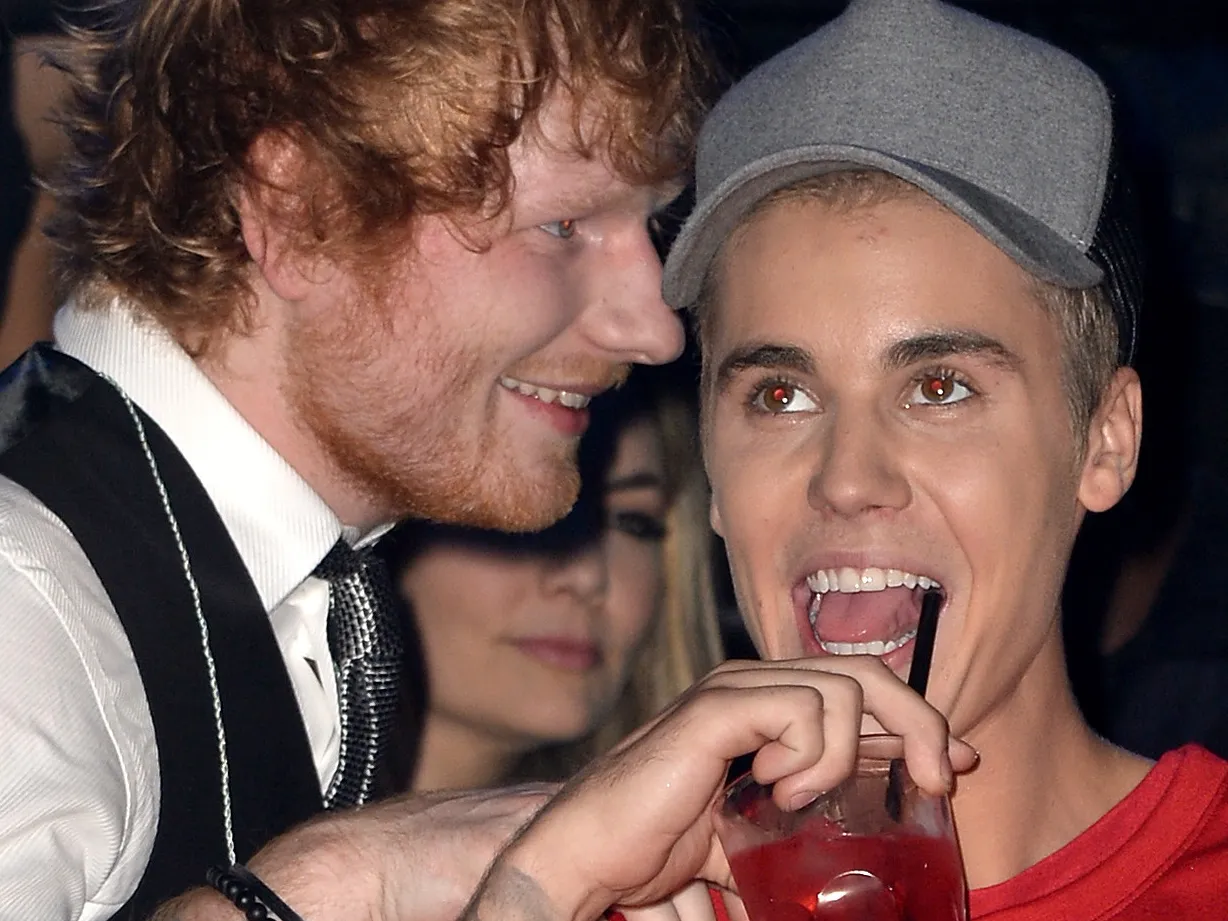
Upon its release, “I Don’t Care” was lauded for its catchy melody, relatable lyrics, and the chemistry between Bieber and Sheeran. The song’s positive, upbeat tone was seen as a refreshing departure from the more reflective nature of their projects, showcasing their ability to create music that uplifts and entertains. Commercially, the track achieved significant success, topping charts around the world and becoming one of the year’s most streamed songs.
The music video for “I Don’t Care” further amplifies the song’s themes of joy and whimsy, featuring both artists in a series of surreal and colorful scenarios. This visual representation, full of humor and light-heartedness, complements the song’s message perfectly, enhancing its appeal and accessibility.
“I Don’t Care” also holds a special place in Bieber’s discography as it represents his ongoing journey towards healing and happiness. Coming after a period of personal challenges, the song is a testament to the power of collaboration and the therapeutic nature of music. It underscores Bieber’s versatility as an artist and his ability to connect with audiences through shared experiences of love and acceptance.
In the broader context of pop music, “I Don’t Care” exemplifies the genre’s capacity for evolution and its ability to address complex emotional states in a way that resonates with a wide audience. The collaboration between Bieber and Sheeran, each bringing their unique style to the project, highlights the importance of artistic synergy in creating hits that transcend boundaries and speak to universal themes of belonging and care.

In conclusion, “I Don’t Care” is more than just a pop song; it’s an anthem of reassurance, a celebration of love’s power to overcome isolation and anxiety. Its success is a testament to the enduring appeal of Justin Bieber and Ed Sheeran, artists who continue to push the boundaries of music while staying true to their emotional and artistic core. Through its uplifting melody and heartfelt lyrics, “I Don’t Care” stands as a beacon of hope and a reminder of the transformative power of love and music.
10. Intentions – A Tapestry of Purpose and Positivity
Intentions, featuring Quavo from Migos, stands as a significant entry in Justin Bieber’s discography, released as part of his 2020 album “Changes.” This track underscores a continuing evolution in Bieber’s musical journey, focusing on themes of love, support, and the uplifting of others. Unlike the party anthems or introspective ballads that have dotted his career, “Intentions” is a feel-good song that combines a smooth, catchy beat with lyrics that celebrate the virtues and strengths of a partner, aiming to spread a message of positivity and purpose.
The collaboration with Quavo brings together Bieber’s pop sensibilities with Quavo’s trap-influenced style, creating a unique blend that’s both engaging and reflective of current musical trends. Produced by Poo Bear, the song’s upbeat rhythm and melodic flow encapsulate a vibe that’s both contemporary and timeless, showcasing Bieber’s ability to adapt and thrive within the ever-changing landscape of pop music.
Lyrically, “Intentions” is rich with expressions of admiration and gratitude, highlighting the importance of recognizing and celebrating the significant other’s qualities and ambitions. Lyrics like “Shout out to your mom and dad for making you / Standing ovation, they did a great job raising you” reflect a mature appreciation for not just the partner but also the family and upbringing that shaped them. This move away from self-centric themes towards a more outward-looking perspective marks a mature phase in Bieber’s career, focusing on positivity and the impact of uplifting messages.
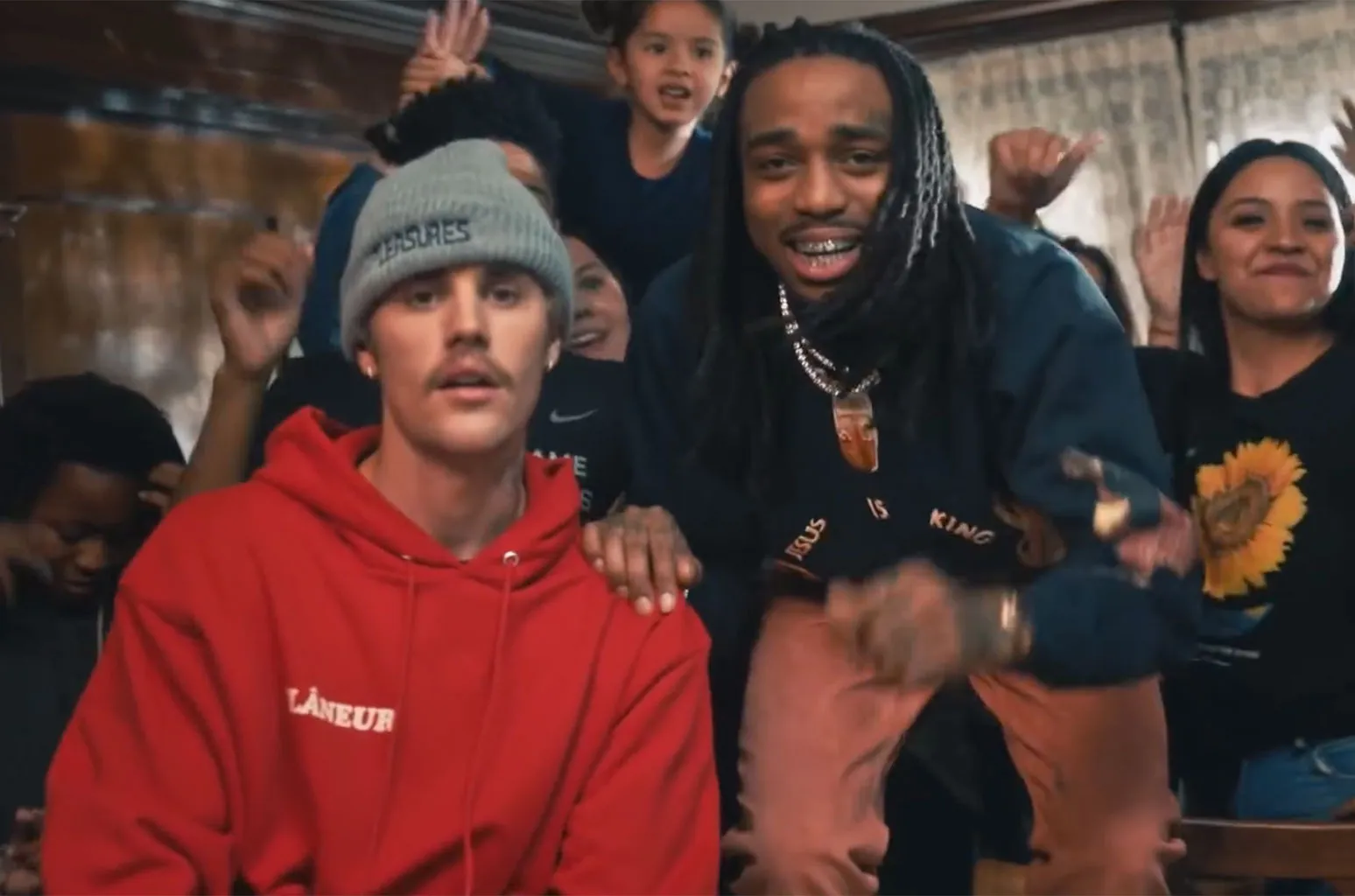
The music video for “Intentions” further amplifies the song’s message by featuring stories of real-life women who have overcome obstacles to pursue their dreams, funded by a donation from Bieber to the Alexandria House, a shelter that assists women and children in crisis. This philanthropic element adds a layer of depth to the song, transforming it from a simple pop track into a vehicle for social impact, highlighting Bieber’s growth not just as an artist but as a person.
Upon its release, “Intentions” received widespread acclaim for its catchy melody, meaningful lyrics, and the seamless integration of pop and hip-hop elements. It enjoyed commercial success, charting globally and becoming a radio staple. The song’s positive message and the philanthropic initiative associated with its release were particularly praised, showcasing a trend in contemporary music where artists leverage their platforms for social good.
In the context of Bieber’s album “Changes,” “Intentions” stands out as a highlight, encapsulating the album’s themes of love, personal growth, and the desire to make a positive change in the world. This track represents a continuation of Bieber’s evolution, from a teenage pop sensation to an artist who consciously uses his music to inspire and uplift.
“Intentions” also reflects broader trends in the music industry, where collaboration across genres and the blending of musical styles have become the norm, creating rich, multifaceted works that appeal to diverse audiences. The song’s success demonstrates the power of music to convey positive messages, foster connections, and make a tangible impact on society.

In conclusion, “Intentions” is more than just a pop song; it’s an embodiment of the positive changes in Justin Bieber’s life and career. Through its uplifting lyrics, catchy melody, and philanthropic outreach, the track showcases Bieber’s maturity as an artist and his dedication to making a difference in the world. “Intentions” stands as a testament to the power of music as a force for good, highlighting the potential for art to inspire, heal, and bring about change.
Justin Bieber’s top 10 best songs encapsulate a decade of musical innovation, emotional expression, and global influence. His journey from a young YouTube sensation to a defining figure in pop music is a testament to his talent, resilience, and ability to connect with listeners across generations. Bieber’s evolution mirrors the changing dynamics of the music industry, where artists are now expected to evolve, experiment, and engage with their audiences in meaningful ways.
Through his music, Bieber has navigated the complexities of fame, personal growth, and artistic expression, leaving an indelible mark on the fabric of contemporary music. As we reflect on these top 10 songs, it’s clear that Justin Bieber’s legacy is not just defined by his chart-topping hits but also by his journey of personal and professional growth, his impact on the music industry, and his commitment to making music that resonates with people around the world.


